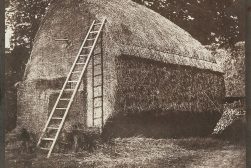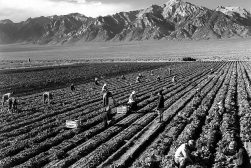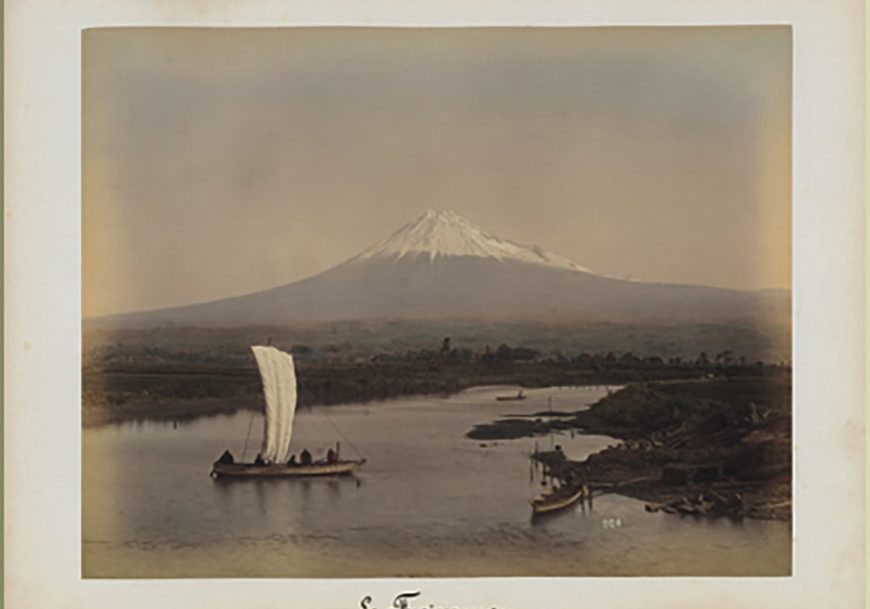
24 Famous Japanese Photographers You Should Know
Join us as we delve deep into the work of the talent from the Land of the Rising Sun. Be sure to follow these 24 famous Japanese photographers.
Japanese photographers have made substantial contributions to the world, extending far beyond the borders of their island nation, influencing and shaping global perceptions of the art.
From the chaotic energy of the bustling city streets to the bold and avant-garde trends in fashion, Japanese photographers attempt to capture and convey the essence of their subjects through their lenses.
Their works reflect a unique blend of tradition and modernity, reality and fantasy, the stark and the vibrant, that is inherently Japanese.
This article will introduce you to some of the most iconic Japanese photographers, covering those who’ve significantly influenced street and fashion photography.
The aesthetic diversity, technical prowess, and emotional depth of these photographers will give you a glimpse into the Land of the Rising Sun.
24 Japanese Photographers To Follow in 2024
Daidō Moriyama
View this post on Instagram
Daidō Moriyama is a renowned photojournalist known for his black-and-white street photography.
Born in 1938 in Osaka, Japan, Moriyama has made a significant impact on the world of photography with his gritty and intense style.
His work captures the energy and chaos of urban life, often focusing on marginalized communities and overlooked aspects of society.
Moriyama’s images have a raw and spontaneous quality, reflecting the fast-paced nature of city streets.
His iconic book “Farewell Photography” and series like “Hunter” and “Tales of Tono” have earned him international recognition and acclaim.
Nobuyoshi Araki
View this post on Instagram
Nobuyoshi Araki is a prolific Japanese photographer known for his provocative and controversial work.
Born in 1940 in Tokyo, Araki has gained worldwide recognition for his exploration of themes like sexuality, bondage, and mortality.
He is known for his black and white photographs, capturing intimate and often explicit scenes with a mix of beauty and darkness.
Araki has published numerous photobooks, including “Sentimental Journey” and “Tokyo Lucky Hole,” which have stirred both admiration and controversy.
His unique approach to photography has made him a central figure in contemporary Japanese photography.
Hiroshi Sugimoto
View this post on Instagram
Hiroshi Sugimoto is a multidisciplinary artist whose work spans photography, architecture, installation, and theater.
Born in 1948 in Tokyo, Sugimoto is renowned for his long-exposure black and white photographs, particularly his seascapes and iconic series “Theaters.”
His minimalist approach to photography creates ethereal and timeless images, blurring the boundaries between reality and representation. Sugimoto’s photographs have been exhibited worldwide, and his works are held in prestigious collections.
In addition to his photography, he has designed architectural projects and collaborated with renowned artists and musicians.
Eikoh Hosoe
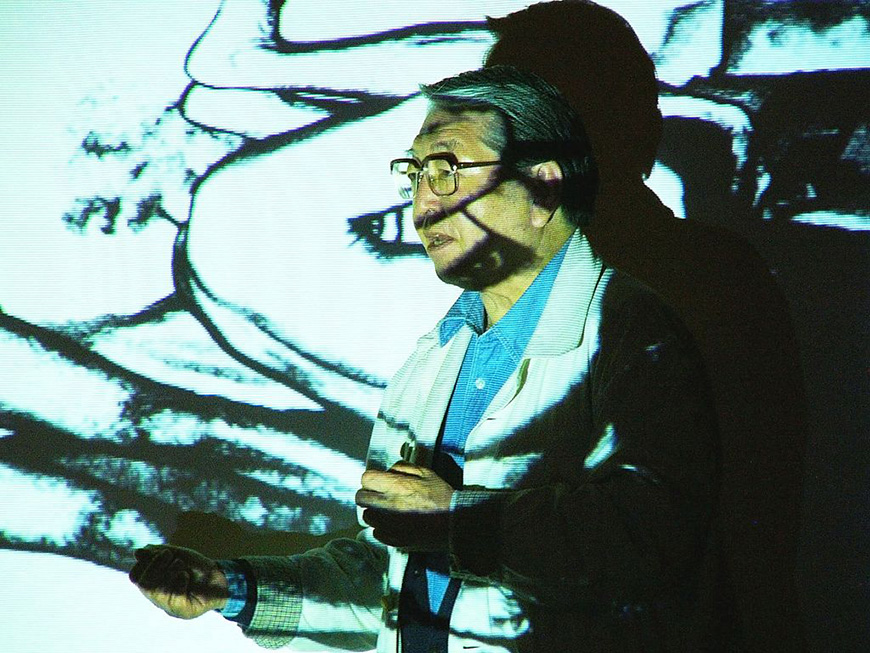
Eikoh Hosoe during FotoArtFestival 2005, Bielsko-Biala, Poland. Credit: Piotr Bieniecki / www.fototeo.pl / license: CC BY-SA 4.0
Eikoh Hosoe is a prominent Japanese photographer and film director. Born in 1933 in Yamagata, Hosoe has been a key figure in the development of Japanese post-war photography.
How Much Do You REALLY Know About Photography?! 🤔
Test your photography knowledge with this quick quiz!
See how much you really know about photography...

He is known for his experimental and symbolic approach, often collaborating with notable figures like writer Yukio Mishima and dancer Tatsumi Hijikata.
His renowned series “Kamaitachi” and “Barakei” have established him as a pioneer in the field of avant-garde photography.
Hosoe’s work explores themes of identity, mythology, and the human body, pushing the boundaries of traditional photographic techniques.
Shōmei Tōmatsu
Shōmei Tōmatsu was a renowned Japanese photographer known for his powerful images that captured the transformation of post-war Japan.
Born in 1930 in Nagoya, Tōmatsu played a crucial role in documenting the aftermath of the atomic bombings in Hiroshima and Nagasaki. His work reflects the social and cultural changes in Japan during the second half of the 20th century.
Tōmatsu’s notable projects include “Nagasaki 11:02,” “I Am a King,” and “Oh! Shinjuku.” His war photographs are characterized by a unique visual language and a keen observation of human experiences.
Rinko Kawauchi
View this post on Instagram
Rinko Kawauchi is a contemporary Japanese photographer known for her serene and poetic imagery.
Born in 1972 in Shiga, Japan, Kawauchi’s photographs often explore the beauty of everyday life, capturing moments of quiet introspection and delicate details of nature.
Her work is characterized by a soft color palette and a sense of tranquillity.
Kawauchi has published several acclaimed photobooks, including “Utatane,” “Cui Cui,” and “Illuminance.”
Her photographs have garnered international recognition, earning her a place among the most influential contemporary photographers.
Issei Suda
Issei Suda was a Japanese photographer known for his captivating and intimate black and white portraits. Born in 1940 in Tokyo, Suda’s work focuses on capturing the essence of human existence, often in everyday settings.
His images have a poetic quality, highlighting the beauty in ordinary moments. Suda’s notable series include “Fūshi Kaden,” “Waga Tokyo 100,” and “Nagi no Hira.”
His masterful use of light and shadow, combined with a deep understanding of human emotions, have made him a celebrated figure in Japanese photography.
Naoya Hatakeyama
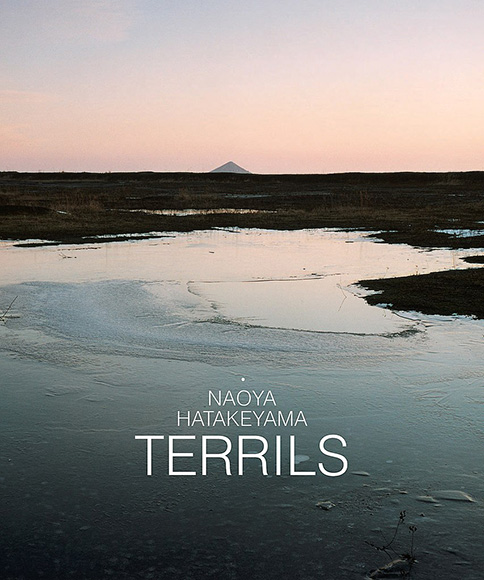
Original photo by Naoya Hakateyama. Here, the book cover of “Terrils” by Naoya Hatakeyama published at Editions Light Motiv, CC BY-SA 4.0, via Wikimedia Commons
Naoya Hatakeyama is a Japanese photographer known for his exploration of the relationship between nature, urban environments, and human intervention.
Born in 1958 in Iwate, Japan, Hatakeyama’s work often examines the impact of industrialization and urban development on landscapes.
His series “Blast,” which documents the quarrying and construction sites, and “River Series,” focusing on the transformation of rivers, have received critical acclaim.
Hatakeyama’s photographs offer a contemplative perspective on the complex relationship between nature and human activities.
Masahisa Fukase
View this post on Instagram
Masahisa Fukase was a renowned Japanese photographer known for his deeply personal and introspective work.
Born in 1934 in Hokkaido, Fukase’s most notable series is “Ravens,” which is considered a masterpiece of contemporary photography.
The series reflects his emotional state after a divorce, using ravens as a metaphor for his own feelings of isolation and despair.
Fukase’s work is characterized by its poetic and haunting quality, capturing the human condition with a deep sense of vulnerability and introspection.
Takashi Homma
Takashi Homma is a Japanese photographer known for his diverse range of subjects and distinctive visual style.
Born in 1962 in Tokyo, Homma’s work encompasses landscapes, architecture, still life, and portraiture.
He has published numerous photobooks, including “Tokyo Suburbia,” “The Narcissistic City,” and “New Documentary.”
Homma’s photographs often explore the intersection between urban environments and human experiences, with a keen eye for composition and detail.
His work offers a unique perspective on contemporary Japanese society and its evolving landscapes.
Tokihiro Satō
Tokihiro Satō is a Japanese photographer known for his innovative use of long-exposure techniques and light trails in his images.
Born in 1957 in Tōchigi, Japan, Satō’s work often focuses on landscapes and human figures within those landscapes.
By using long-exposure photography and manipulating light sources, he creates mesmerizing and ethereal photographs that blend the presence of people with the flow of time and light.
Satō’s series “Photo-Respiration” and “Gaze” have garnered international acclaim for their poetic and contemplative nature.
Shōji Ueda
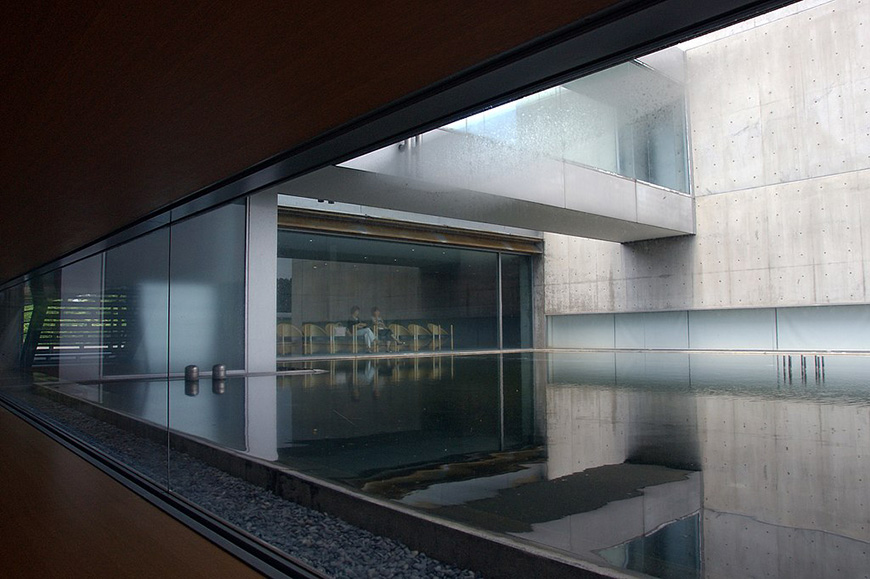
Shoji Ueda Museum of Photography in a Hōki, Tottori, Japan. Credit: 663highland, CC BY-SA 3.0, via Wikimedia Commons
Shōji Ueda was a prominent Japanese photographer known for his surreal and poetic imagery.
Born in 1913 in Tottori, Ueda’s photographs often incorporate elements of humor and playfulness while capturing the beauty of everyday life.
He created unique compositions using props and surreal settings, blurring the boundaries between reality and fiction.
Ueda’s iconic series “Sand Dunes” and “Children” exemplify his ability to infuse ordinary scenes with a touch of magic and whimsy. His work has had a profound influence on contemporary photography in Japan and beyond.
Kikuji Kawada
View this post on Instagram
Kikuji Kawada is a renowned Japanese photographer whose work combines history, memory, and the power of storytelling. Born in 1933 in Chiba, Japan, Kawada’s most celebrated series is “The Map,” which explores the collective memory of Japan and its post-World War II identity. The series incorporates elements of documentary and poetic imagery, creating a complex visual narrative. Kawada’s photographs often delve into themes of time, history, and the human condition, making him a significant figure in the Japanese photographic tradition.
Yasumasa Morimura
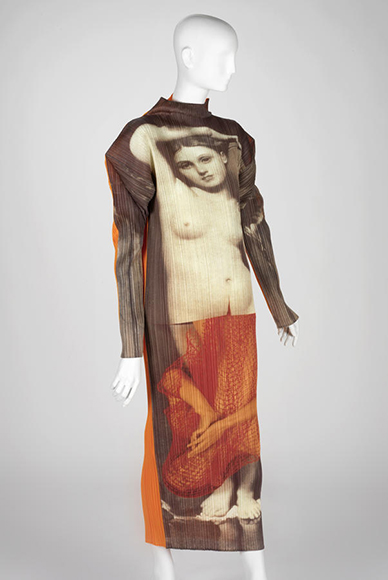
Yasumasa Morimura for Issey Miyake, printed polyester, 1997. From the Guest Artist series, first collaboration. Credit: Photographer from the Rhode Island School of Design Museum of Art, CC0, via Wikimedia Commons
Yasumasa Morimura is a multidisciplinary artist known for his captivating self-portraits that challenge concepts of identity, gender, and cultural representation.
Born in 1951 in Osaka, Morimura’s work blurs the boundaries between photography, painting, and performance.
He recreates iconic images from art history and popular culture, inserting himself into them and assuming various roles. Morimura’s thought-provoking and visually striking photographs examine themes of cultural appropriation, self-representation, and the construction of identity in contemporary society.
Lieko Shiga
View this post on Instagram
Lieko Shiga is a Japanese photographer known for her dreamlike and enigmatic images.
Born in 1980 in Aichi, Japan, Shiga’s work often explores the relationship between nature and human existence, employing a mix of documentary and fictional elements.
Her series “Rasen Kaigan” focuses on the aftermath of the devastating 2011 earthquake and tsunami in Japan, depicting the profound impact on the landscape and people’s lives.
Shiga’s photographs evoke a sense of mystery and emotional depth, inviting viewers into her poetic and visually rich narratives.
Yasuhiro Ishimoto
View this post on Instagram
Yasuhiro Ishimoto was a Japanese-American photographer known for his contributions to both American and Japanese photography.
Born in 1921 in San Francisco, Ishimoto later moved to Japan and became deeply influenced by traditional Japanese aesthetics.
His work often blended elements of abstraction, geometry, and human presence. Ishimoto’s photographs reflected his interest in architectural forms, as seen in his iconic series “Katsura: Picturing Modernism in Japanese Architecture.”
His images capture the essence of space and light, showcasing his unique artistic vision.
Hiroshi Yamazaki
Hiroshi Yamazaki is a Japanese photographer known for his compelling and evocative images that depict the human experience.
Born in 1946 in Osaka, Yamazaki’s work often explores themes of memory, identity, and cultural heritage.
His series “Tales of Tono” and “Kumanogawa” are deeply rooted in Japanese folklore and traditions, intertwining mythology with contemporary life.
Yamazaki’s photographs have a quiet and introspective quality, inviting viewers to reflect on the layers of meaning within his imagery.
Tadahiko Hayashi
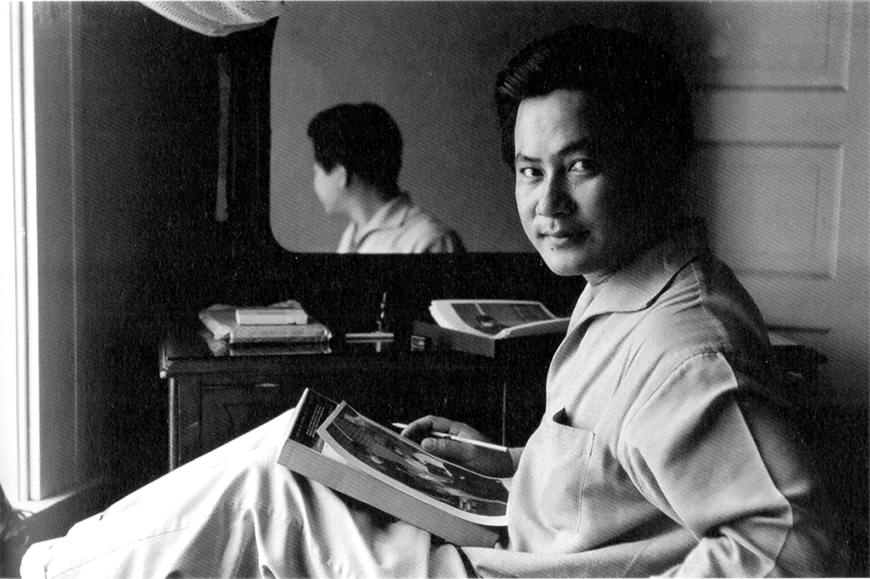
Hayashi Tadahiko at a hotel in LA, 1955. Credit: 『時代を語る 林忠彦の仕事』光村推古書院、2018年、ISBN 978-4838105748, Public domain, via Wikimedia Commons.
Tadahiko Hayashi was a Japanese photographer known for his iconic portraits and fashion photography.
Born in 1918 in Tokyo, Hayashi’s work spans several decades and encompasses a wide range of subjects.
He gained recognition for his portraits of famous figures in the Japanese entertainment industry, capturing their charisma and allure. Hayashi’s fashion photography showcased a keen sense of style and elegance.
With his distinct artistic vision, he left a lasting impact on the field of photography in Japan.
Hiromix
Hiromix, also known as Hiromi Toshikawa, is a Japanese photographer and multi-talented artist.
Born in 1976 in Tokyo, Hiromix gained recognition in the 1990s for her candid and vibrant snapshots of youth culture and everyday life.
Her photographs captured the energy and spirit of Tokyo’s streets, documenting the experiences of young people in a rapidly changing society.
Hiromix’s work became emblematic of the snapshot aesthetic and the DIY ethos of the era. In addition to her photography, she has pursued various artistic endeavors, including modeling, acting, DJing, writing, and creating visual art.
Daisuke Yokota
Daisuke Yokota is a contemporary Japanese photographer known for his experimental and abstract approach to photography.
Born in 1983 in Saitama, Yokota pushes the boundaries of traditional photographic techniques, often manipulating the physical qualities of the medium itself.
His work incorporates elements of distortion, overlapping layers, and unconventional printing methods, resulting in images that possess a sense of mystery and ambiguity.
Yokota’s series “Site/Cloud” and “Matter” showcase his distinctive visual style and his ability to create atmospheric and otherworldly photographs.
Fuyuki Hattori
Fuyuki Hattori is a Japanese photographer recognized for his unique documentary-style street photography. Born in 1975 in Tokyo, Hattori captures the energy and rhythm of urban life in his images.
His photographs often feature vibrant colors, dynamic compositions, and a keen eye for the decisive moment.
Hattori’s work reflects the fast-paced and diverse nature of Tokyo, encapsulating its essence through his visual storytelling.
With his keen observation and ability to capture authentic moments, he has established himself as an influential figure in contemporary Japanese street photography.
Hiroshi Watanabe
View this post on Instagram
Hiroshi Watanabe is a Japanese photographer known for his masterful compositions and ability to convey emotions through his images.
Born in 1951 in Sapporo, Watanabe’s work spans various genres, including street photography, portraiture, and documentary.
His photographs often reflect a sense of serenity and contemplation, capturing fleeting moments of beauty and human connection.
Watanabe’s series “Love Point” and “Findings” showcase his skill in creating visually arresting and emotionally resonant photographs that invite viewers to ponder the complexities of the human experience.
Kusakabe Kimbei
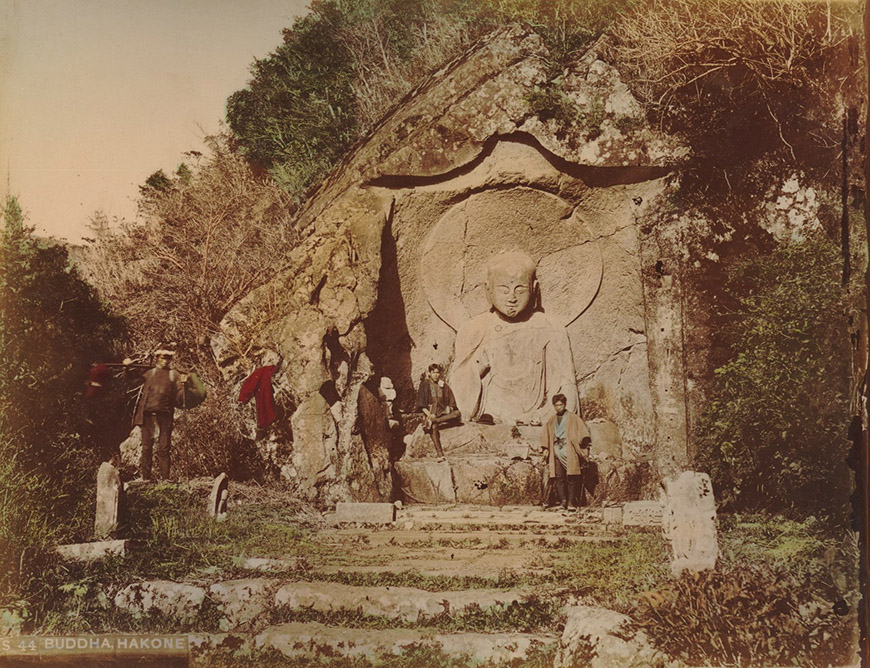
Credit: Kusakabe Kimbei, Public domain, via Wikimedia Commons
Kusakabe Kimbei was a pioneering Japanese photographer who played a crucial role in documenting Japan’s transition from the Edo period to the Meiji era.
Born in 1841 in Okayama, Kimbei worked as an apprentice in Felice Beato’s photography studio before establishing his own successful studio in Yokohama.
He specialized in producing hand-colored photographs that depicted landscapes, daily life, and cultural practices of Japan.
Kimbei’s work provided a valuable visual record of the country’s history during a period of significant change and modernization.
Shinzō Fukuhara
Shinzō Fukuhara was a Japanese photographer and businessperson who made significant contributions to the development of photography in Japan.
Born in 1883 in Kobe, Fukuhara founded the photography magazine “Kōga” and established the publishing company “Shashin Shinpō-sha,” which promoted the artistic and technical aspects of photography.
He was also a co-founder of the Japan Photographic Society. Fukuhara’s own photography encompassed various genres, including landscapes, portraits, and pictorialism.
He played a crucial role in fostering a vibrant photographic community and promoting the artistic merits of photography in Japan.
What are some Common Styles adopted by Japanese Photographers?
There are a few distinctive styles and themes that recur often in the work of the Japanese photographers in this guide:
- Monochrome Photography: Many renowned Japanese photographers, like Daido Moriyama and Hiroshi Sugimoto, have used black-and-white photography to great effect. This style can bring out the textures, contrasts, and tones in the subject matter and has been used to capture everything from street scenes to seascapes.
- Street Photography: Japanese photographers have a rich tradition of street photography, capturing candid moments of urban life, especially in cities like Tokyo and Osaka. This style often involves high-contrast, gritty images that reflect the energy, chaos, and sometimes the alienation of city life.
- Minimalism: Drawing from traditional Japanese aesthetics, some photographers adopt a minimalist approach, focusing on simplicity, subtlety, and the use of negative space. This style often emphasizes the beauty of everyday objects and scenes.
- Juxtaposition of Tradition and Modernity: Many Japanese photographers explore the tension between Japan’s rich historical traditions and its rapid modernization. This can manifest in various ways, such as traditional architecture versus modern skyscrapers, or kimono-clad individuals in bustling city streets.
- Intimate Portraiture: Some Japanese photographers, like Nobuyoshi Araki, have gained fame for their intimate and sometimes provocative portraits. These images often blur the lines between personal and public, tradition and rebellion.
- Color and Vibrancy: Contrary to the monochrome style, some photographers, like Mika Ninagawa, are known for their vibrant and highly saturated images. These photographers use color to create bold, eye-catching compositions.
Each of these styles is a response to Japan’s unique cultural, social, and historical context.
Who are some Famous Japanese Fashion Photographers?
- Hiroshi Sugimoto: While he’s primarily known for his long-exposure seascapes and architectural photography, Sugimoto has also made significant contributions to fashion photography. His work is often characterized by a haunting, timeless quality that blurs the line between reality and fantasy.
- Nobuyoshi Araki: Araki’s provocative and controversial work often incorporates fashion elements. He’s known for his intimate and erotic portrayal of women, which has led to collaborations with many fashion brands and magazines.
- Mika Ninagawa: She is known for her vibrant and colourful photographs. Ninagawa’s work often features brightly colored flowers, goldfish, and landscapes. Her unique aesthetic has been sought after by many fashion brands.
- Junya Watanabe: Although he’s primarily known as a fashion designer, Watanabe’s work often blurs the line between design and photography. His innovative and avant-garde style has had a significant influence on the world of fashion photography.
- Yasumasa Yonehara: Known for his candid and raw depictions of youth culture and fashion in Japan, Yonehara’s work often features unconventional models and street fashion.
- Shoichi Aoki: He’s the founder and chief editor of FRUiTS, a street fashion magazine that has had a significant influence on Japanese and global fashion culture. Aoki’s work is known for its candid and colorful depictions of Harajuku fashion.
Who are some Famous Japanese Street Photographers?
- Daido Moriyama: He is considered one of the most influential photographers of his generation. Moriyama’s gritty and contrasting black and white images reflect the chaotic atmosphere and vibrant energy of Japanese streets, especially those of Tokyo during the post-war era.
- Nobuyoshi Araki: Known for his provocative and controversial style, Araki’s work often blends street photography with themes of eroticism and the mundane. His depictions of Tokyo are intimate and personal, offering a unique perspective of the city’s atmosphere.
- Takuma Nakahira: A co-founder of the influential Provoke magazine, Nakahira’s work is characterized by his radical and confrontational style. His photographs often feature blurred and out-of-focus images, reflecting the complexities and chaos of urban life.
- Keizo Kitajima: He is known for his dynamic and powerful images of urban nightlife in Tokyo. Kitajima’s work often explores themes of alienation and identity amidst the changing socio-cultural landscape of Japan.
- Junku Nishimura: Known for his grainy, high-contrast black-and-white images, Nishimura’s work captures the nostalgia and warmth of everyday life in Japan’s rural towns and cities.
- Yutaka Takanashi: A co-founder of the Provoke magazine along with Takuma Nakahira, Takanashi’s photography is often characterized by its raw and candid depiction of urban life. His work reflects the rapid modernization and transformation of Tokyo during the post-war era.

Check out these 8 essential tools to help you succeed as a professional photographer.
Includes limited-time discounts.
As the Content Manager of Shotkit, India Mantle brings with her a lifelong love for photography that she developed during her childhood, watching her father document their family moments with his Nikon EM. In her free time, you find her enjoying the awe-inspiring natural beauty of her home, Northern Rivers, Australia.






